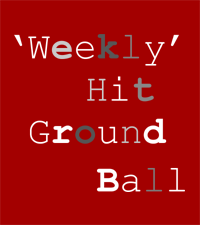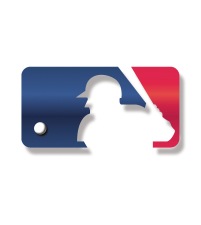The Baltimore Orioles won 96 regular season games in 2014 and won the AL East division by 12 games ahead of the New York Yankees.
At first glance you might think that they didn’t need to do much to keep ahead of the pack, yet that’s not how things work in a division containing two giants (Boston Red Sox and New York Yankees), another big market team (Toronto Blue Jays) and a team that has proved more than capable of punching above its weight (Tampa Bay Rays).
The Orioles were unable to hold on to free agents Nelson Cruz and Nick Markakis and, so far, are yet to replace them. The only Major League addition they’ve made is bringing back Delmon Young (who can contribute, yet only in a limited way), which puts great importance on Manny Machado and Matt Wieters making quick and successful returns from the injuries that curtailed their 2014 campaigns.
The core of Baltimore’s 96-win team is still in place, but it would be surprising if they didn’t add an outfield bat before the season begins as the rest of the division isn’t sitting back.
The Boston Red Sox have responded to their disastrous 91-loss season by adding established Major League regulars in Hanley Ramirez, Pablo Sandoval, Rick Porcello, Wade Miley and Justin Masterson. Although failing to re-sign Jon Lester was a blow, the Red Sox won a World Series in 2013 after adding some solid experienced players and they’ve made similar steps to bolster a roster with some exciting young talent (led by Xander Bogaerts and Mookie Betts) so that another worst to first turnaround is possible.
The Toronto Blue Jays have also been active, adding Canadian Russell Martin as a free agent and trading for Josh Donaldson from the A’s to make a formidable batting core alongside Jose Reyes, Jose Bautista and Edwin Encarnacion. They appear set to go with their current mix of youth (Marcus Stroman, Drew Hutchison) and experience (Mark Buehrle, R.A. Dickey) on the pitching staff, but it wouldn’t be a surprise to see another hurler signed too.
The same may also be true of the New York Yankees. Max Scherzer would improve any team and, however much they may publicly distance themselves from the possibility, the Yankees are always a contender to spend on a star talent. CC Sabathia and Masahiro Tanaka both suffered injuries in 2014 and if either reports any lingering issues when throwing in January, that could open the door to the Yankees being the team to offer Scherzer and his agent Scott Boras the big contract they are holding out for.
The Yankees have spent money on the free agent market by signing Andrew Miller to replace the departed David Robertson in the bullpen. Didi Gregorius was acquired in a trade to be the man to replace Derek Jeter at shortstop, whilst the impending return of Alex Rodriguez will be the big news when Spring Training camps begin.
The three main storylines coming out of the Tampa Bay Rays over the past few months have been about key individuals leaving. David Price was traded to Detroit during the past-season, General Manager Andrew Friedman was lured away early in the off-season by the appeal of the huge revenues to exploit at the LA Dodgers, whilst Manager Joe Maddon was also tempted away by the money and opportunities afforded by the Chicago Cubs.
The changes have continued with young outfielder Wil Myers being traded away and the recent signing of free agent Asdrubal Cabrera has prompted numerous rumours about Ben Zobrist being the next key contributor to be moved on before he becomes a free agent at the end of the 2015 season.
Amidst it all, it says a lot about the Rays that they will still be fielding a competitive team in 2015, led by an exciting young starting rotation. If everything clicks, including a return to form by Evan Longoria, then the Rays should not be counted out despite once again having an offseason that will not immediately gain much attention.


